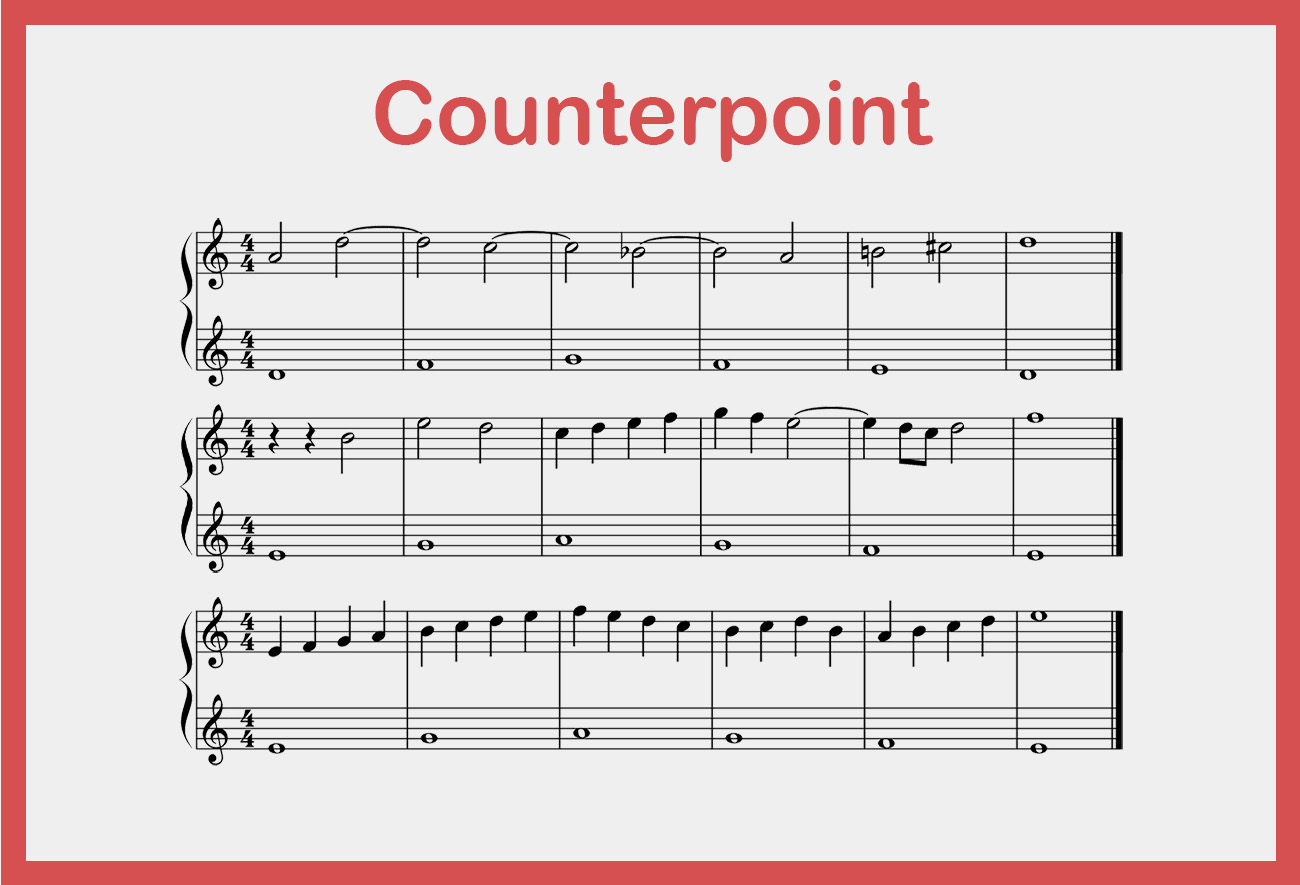Welcome to the world of counterpoint! It’s like a musical dance where melodies work together to make beautiful music. In this tradition, we learn how different melodies can talk to each other in a harmonious way. Each note and tune join in, creating a special kind of sound that makes music interesting.
Whether you’re a music pro or just starting, learning how melodies team up helps you understand how music is made. Come along as we explore counterpoint and discover how melodies become friends in the wonderful world of music!
What is counterpoint in music?
In music, counterpoint means putting different melodies together to make them sound good when played at the same time.
It’s more about how melodies move and interact than just individual chords and harmony. People usually learn about counterpoint in traditional music classes to understand how composers used to write music.
But the basic ideas can be useful for any type of music. Counterpoint helps you pay attention to how different melodies work together in your music arrangements.
Counterpoint basics
Creating good counterpoint is a complex topic that could take years to fully understand. However, the basics are surprisingly simple.
The first important idea is understanding the different ways melodies can move when they are put together. These include:
Parallel motion: both lines move in the same direction.
Oblique motion: one line stays the same while the other moves.
Contrary motion: the two lines move in opposite directions.
In counterpoint, the goal is to make the voices work independently, so we prefer contrary and oblique motion when we can. We’ll talk more about this later!
Additionally, a counterpoint can involve more than just two lines. Managing how multiple voices interact and ensuring smooth movement between them becomes a significant focus.
Rules of counterpoint
Learning about counterpoint usually involves following a bunch of rules for composing music.
But in today’s music, you don’t have to stick to these rules so strictly.
Even though you might not use them all the time, understanding these rules helps you see how this type of music writing works.
These rules were made to help composers create specific sounds in their music.
Here are the most common rules people learn for writing counterpoint:
1. Avoid parallel perfect intervals
Each musical interval gets a number and a name.
Perfect fourths and perfect fifths sound stable and don’t have a big or small feeling. Composers in the past thought using these intervals too much could make individual voices less clear. So, in counterpoint, it’s a rule not to make perfect intervals move in the same way (parallel motion).
Among them, parallel fifths were thought to be extra important to avoid.
2. Avoid skips to dissonance
In the old days of music, people were really strict about which sounds sounded good together and which ones didn’t.
Composers back then cared about things we don’t care much about today. One of those things was how you move between different notes in the scale.
Jumping too far to a note that doesn’t sound good with the others was a big no-no for writing smooth counterpoint.
3. Avoid tritones
The tritone is an interval that has a bit of a bad reputation. People used to say it sounded like the “devil in music,” but it was never officially forbidden by religious authorities, despite what some say.
However, in counterpoint, an important rule is to avoid making melodies that create the sound of an augmented fourth or diminished fifth.
Also, jumping a melody by a tritone in either direction is not allowed—it’s rule #2!
4. Fill in skips
In traditional counterpoint, going one step at a time is seen as the easiest way for melodies.
A common rule is to use steps to connect big jumps, especially when those jumps go in the opposite direction.
Following this rule helps make melodies that flow nicely and fit well with the other parts.
How to use counterpoint in your songwriting

How to use counterpoint in your songwriting
Now that we’ve covered the basics, counterpoint is something you use whenever you have different melodies happening together.
This could be multiple lead lines, harmony vocals, or even the interplay between instruments like the melody and the bassline.
So, counterpoint becomes a tool for arranging, helping you create cleaner and more musical ideas.
Here are some arranging tips based on the rules of counterpoint:
1. Avoid too much parallel motion
As I said before, traditional counterpoint doesn’t like it when melodies move too similarly.
Even though you can use any intervals you want in your music, try changing it up by using melodies that move in different or opposite ways.
Just holding a note in one part to make a smooth motion can make a section feel less chunky, especially if it seems too blocky otherwise.


